
Heritage & Folklore
The Source to New Cumnock & Kirkconnel
The Source of the Nith

Some people believe that the Source of the Nith is located in the Lowther Hills to the east of New Cumnock. However, after studying maps and tracing back the river it is apparent that while the river reaches its most northern point near the Lowther Hills, it actually originates further south, from a location nestled in the range made up of the Carsphain and Scaur Hills. The range doesn’t have its own official name but local communities that live around the hills each have their own claims to the area.
The Carsphairn Hills have some hidden gems but they are hard to find. One of which is a Neolithic stone circle located about half a mile from Nith Lodge. The circle originally consisted of 15 two-metre standing stones and when excavated by archaeologists, a battle-axe was found along with evidence of a burial mound. The closest village to the site is Dalmellington, East Ayrshire which has a wealth of heritage including an impressive Medieval Motte.
Coal Mining

The towns and cities of Scotland expanded rapidly during the industrial revolution of the 19th century. When you see the grand edifices of Glasgow and Edinburgh you may not immediately think of a town deep in the hills of South Ayrshire, but much of what fueled this great wave of change actually originated in places like New Cumnock.
Coal mining started in the area around New Cumnock in the 18th century and by the 19th deeper mines and a new trainline helped turn it into a thriving town. Many of the impressive buildings built during this period can still be found today.
The closure of the mines from the 1960s onwards had a significant effect on the town, as it did in all towns across the country linked to coal mining.
The work of the Coalfields Regeneration Trust celebrates and builds on this legacy, ‘leading the way in coalfields regeneration to restore healthy, prosperous and sustainable communities’.
Knockshinnoch Mining Disaster
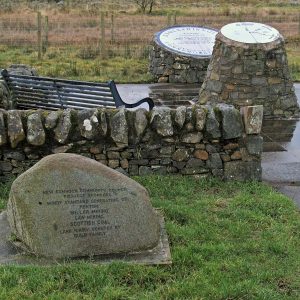
On Thursday 7th September 1950 heavy rain caused part of a glacial lake to collapses and sent a flood of peat water into the Knockshinnoch Castle Colliery. 129 men were trapped below the surface, their escape routes blocked by the flood water.
Fortunately, 116 managed to make their way out and walk free with the help and support of the rescuers’ efforts. Sadly, 13 men never emerged. Their bodies were found years later and now rest in Afton cemetery.
The story of the Knockshinnoch disaster was also made into a feature film in 1952 named ‘The Brave Don’t Cry’. It explores how the human spirit endures even in the darkest of moments.
Robert the Bruce: Cumnock Castle
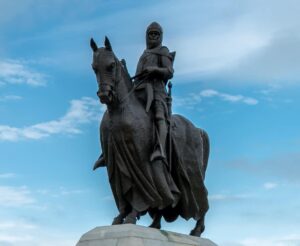
Dumfries and Galloway played an important role in the Scottish Wars of Independence. Robert the Bruce, who would become King Robert of Scotland, found the region to be a source of support and respite as well as the location of a near miss near New Cumnock. Edward II wanted to send a clear message to the Scots by quashing Bruce’s rebellion. He and his army traveled up through Nithsdale, likely shadowing the river Nith itself and set up camp at Cumnock Castle. Robert managed to evade capture by using the hills around New Cumnock to outflank the army of Edward and escape in order to continue raising support for his cause.
New Cumnock Heritage Trail
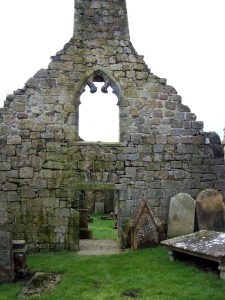
New Cumnock has a proud history that stretches back centuries. A great way to learn more about this, to see the key sites and to enjoy the other parts of the townscape is by walking the Auld Kirk And Village Heritage Trails.
Sanquhar to Drumlanrig Castle
The World’s Oldest Post Office

Sanquhar post office has the unique distinction of being the oldest post office in continuous existence in the world. It opened in 1712 and for over 300 years has been keeping Sanquhar connected to the world and the world to it. Recognised by the Universal Postal Union and Guinness World Records, it is 8 years older than its nearest rival in Stockholm, Sweden. It is also well known for marking letters with its hand stamped ‘The World’s Oldest post Office’, which attracts enthusiasts and people from around the world.
Festival of Folklore

Founded by Mostly Ghostly, the Festival of Folklore is a new Scottish festival, celebrating the world of folklore, and set in the mythical landscapes of Upper Nithsdale, Dumfries and Galloway. Inspired by the area’s stunning natural beauty and colourful tapestry of history and legends, the Festival aims to encourage people to discover Upper Nithsdale, and immerse themselves in its history, heritage, myth and magic.
Drumlanrig Castle
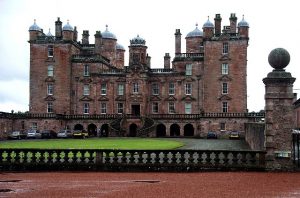
One of Britain’s most dramatic castles can be found nestled in the hills of the Southern Uplands. Drumlanrig castle is considered one of the finest examples of 17th Century Renaissance architecture in Scotland. Paid tours of the castle operate between April and August through which you can explore its magnificent architecture and interiors and experience a part of Scotland’s history.
Morton Castle
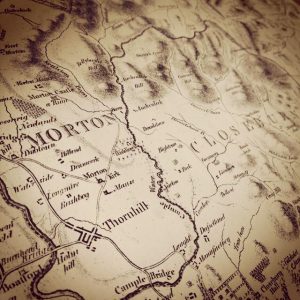
Morton Castle originates from a fortification built in the 12th century in a strategic location above Morton Loch. It was clearly seen as a valuable asset as it was converted into a castle around the early 14th century and was owned by the nephew of Robert the Bruce, Thomas Randolph, a key ally in the wars of Scottish Independence. Morton castle was demolished in 1346 along with 13 other Nithsdale castles in exchange for King David II, who had been kept captive in England. In 1936 the Castle was re-built by the new Earl of Morton who was inspired by the triangular shape of Caerlaverock Castle just south of Dumfries. The remains of the Great Hall still stand today after being abandoned in the late 18th century. Its impressive architecture, interesting history and beautiful location make it a great day out.
Museum of Lead Mining and Gold Panning Experience
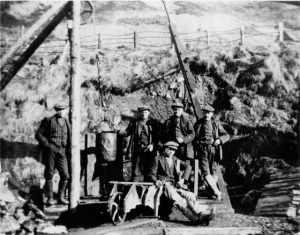
Right at the top of the Lead Hills lies Wanlockhead, one of the Highest Villages in Scotland. It is a village with a wealth of heritage and at the top of the list is an 18th century lead mine and museum where you can actually take a tour through the mines! It is the only underground mine tour functioning in all of Scotland. You can experience how miners lived through the centuries, check out the miners’ library and have a look at what the miners dug up. One of the other fascinating activities the museum has to offer is the opportunity to go gold panning! Whether it be a taster session or taking part in the gold panning championships you could find real gold!
The World’s Oldest Curling Society
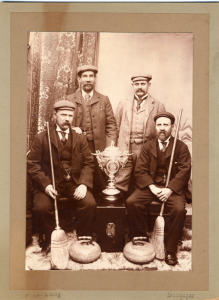
Although no longer in existence, the world’s oldest curling society was founded in Sanquhar. Curling was a popular sport in Scotland during the 19th century and much of this popularity was due to the actions of enthusiasts. On the 1st January 1774 sixty local curlers met to play on the Black Loch of Sanquhar Moor. After this, they met at the Queensberry Arms and founded the Sanquhar Curling Society. Some very interesting documents about the society and its formation still survive which give not only a glimpse into the history of curling but also the people of Sanquhar itself.
Thornhill to Moniave
Moniaive Village

The bustling village of Moniaive sits on the Cairn Water, one of the major tributaries of the Nith. It has long been associated with famous people such as Robert the Bruce, King James IV, Bonnie Prince Charlie, Robert Burns, singer Annie Laurie and artist James Paterson. Today, it is well known as a hub for artists, photographers, musicians and other creatives. A great way to learn more about the village and the local area is to enjoy the Moniaive History Trail which helps you discover monuments and places of importance and gives a fascinating insight into its over 1000 year history.
Further Reading:
Thornhill Village
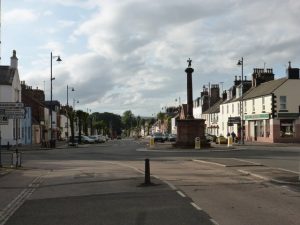
The origins of Thornhill might date as far back as the Romans where they used this route to access the west of Scotland. In the 1600s there was an established settlement here, complete with a mill, though a wooden bridge over the River Nith built in the 1400s to provide a route to the west had already been lost in a flood. Thornhill’s past and present show the importance of its location in connection to the river Nith and the connection between Dumfries and Galloway and Ayrshire.
Further Reading:
Tynron Doon
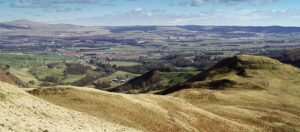
Tynron Doon is an impressive iron age hill fort outside the village of Tynron. It lies at the southern edge of the Scaur hills, was built in a commanding location and to this day offers stunning views of the surrounding countryside. It was first occupied around the 1st millennium BC, but people were drawn back on and off to live there until the 16th century. It was also the site of one of nine beacons maintained by the Sheriffs of Nithsdale and Annandale in the 15th century, where watchmen could light fires to warn of enemy raids. One of the best ways to enjoy this significant and ancient site is through the Auchengibbert Hill and Tynron Doon walk.
Further Reading:
Auchengibbert Hill & Tynron Doon (moniaive.org.uk) | Tynron Doon, Dumfries and Galloway (ordnancesurvey.co.uk) | Tynron Doon (canmore.org.uk)
Kirkpatrick Macmillan

Kirkpatrick Macmillan, who hails from Keir Village, Dumfriesshire, is credited as the inventor of the first ever pedal pushbike! Although Kirkpatrick did not patent the invention he is still recognized as the creator of the machine that revolutionised the way we travel all around the world. Born in 1812 in the small village near Penpont, Kirkpatrick became a blacksmith and took inspiration from a Hobby Horse toy and developed a frame with pedal mechanisms that became the world’s first ever bicycle. You can visit the plaque in Keir village today that sits on his home, Courthill Smithy.
Further Reading:
Auldgirth, Holywood, and Uppercluden
Fourmerkland Tower
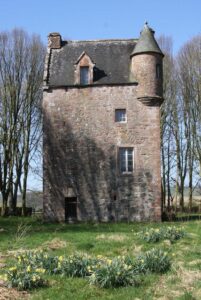
Hidden away in a quiet copse of woodland sits Fourmerkland Tower. This tower house, dated to c.1590 is a Small, simple rectangular-plan tower house with a conical-roofed turret. Renovated later in the 19th century, it is a little gem that most will never even notice.
Further Reading:
Ellisland Farm
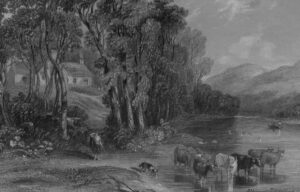
Ellisland Farm & Museum is set in a picturesque location on the banks of the River Nith. It was the family home built by Robert Burns in 1788 for his bride Jean Armour. Ellisland allows people to learn more about the life of Robert Burns and experience the peace and tranquillity of its riverside location. Much of Burn’s work was penned there and today you can get a sense of what life was like for him and his family through the extensive collection of artifacts, memorabilia and manuscripts housed at the home he built, lived and worked in.
Further Reading:
Jane Haining Trail
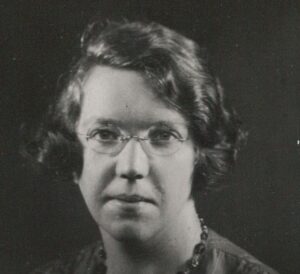
Jane Haining, originally from Dunscore travelled to Budapest in Hungary before the Second World War to work as a matron in a children’s home. She refused to abandon her post and was classed as a non-Jew aiding Jews during the Holocaust. She became the only Scots woman to die at Auschwitz. You can visit some of the places that were important in Jane’s life and find out more about her by following the Jane Haining Trail.
Further Reading:
Closeburn Castle
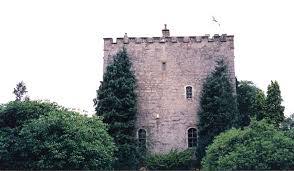
The Closeburn castle was built in 1232 by the Kirkpatrick Family where they reside until 1783. The family became a family of notoriety after sir Roger De Kirkpatrick aided Robert the Bruce in the killing of the Red Comyn in the Grey Friars Church, Dumfries in 1306. The son of Roger de Kirkpatrick then went on to recapture Caerlaverock castle from the English in 1355 but was murdered there 2 years later.
Further Reading:
Johnston Mausoleum
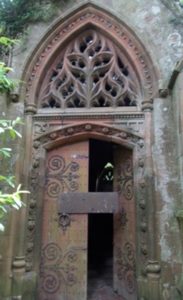
The Johnston Mausoleum, now ruined but still an excellent example of Gothic funerary architecture. Built around 1850 it is located not far from Kirkton and Carnsalloch. The building is nor classed as ‘at risk’ due to disrepair so it’s best not to get too close. Despite this, it’s another hidden gem nestled away along the Nith.
Further Reading:
Twelve Apostles Stone Circle
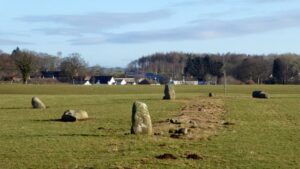
The Twelve Apostles Stone Circle, located near the village of Hollywood, is the seventh largest stone circle in Britain and the largest on the mainland of Scotland. The 88 metre wide circle originally had 18 stones with 11 still surviving and visitors often comment on the sense of solitude and tranquillity they find there. It is also a way to connect with the people who lived along the Nith before recorded history and ask what did they see, smell, hear and feel, and whether any of that still remains.
Further Reading:
The Hermitage

Located within Friars Carse Hotel grounds, Robert Burns referred to the Burns Hermitage as the ‘lived cot’ where the poet came to talk with his friends at Friars Carse and to write poetry. For these years were some of the most fruitful times of his short life. Burns left his mark on the tiny Hermitage, scratching some lines from a poem onto a window with a diamond.
Further Reading:
Carnsalloch House
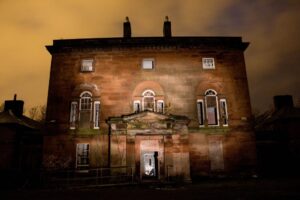
Carnsalloch house has a special place in the folklore of Nithsdale. Visitors to the property have spoken of apparitions, footsteps and uncanny feelings, some have heard stories of the legendary Pink Lady and her alleged lover, the horseman. If you listen carefully on a crisp, dark night, you might just hear his hooves galloping hard along the eerie driveway. Check out an article by mostly Ghostly for more information on the strange happenings at Carnsalloch house.
Further Reading:
Dumfries to Kingholm Quay
Dumfries Museum and Camera Obscura
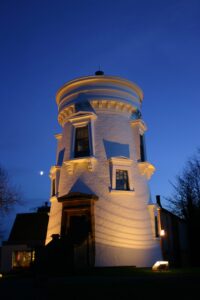
Dumfries Museum not only helps house the history of the town and the region but is also somewhere you can go to learn more about the people who lived along the Nith. There are some fascinating exhibits including: fossil footprints left by prehistoric animals, the wildlife of the Solway, tools and weapons of our earliest people, stone carvings by Scotland’s first Christians and the everyday objects of the Victorian farm, workshop and home.
The museum also houses the world’s oldest working Camera Obscura, which is on the top floor of the windmill tower on site. It was installed in 1836 for the purpose of astronomy when the windmill was converted into an observatory. From it you can see a fascinating panoramic view of Dumfries and the surrounding countryside.
The museum also hosts a lively programme of special exhibitions, events and family activities throughout the year and has a shop selling unusual and nostalgic toys, gemstones, gifts and books.
The Crichton
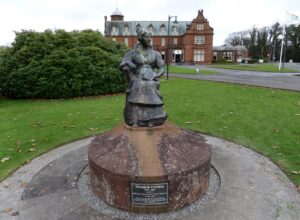
The Crichton sits proud over Dumfries and is still an enormous asset to the town and region. The story began in the early 1800s when Elizabeth Crichton inherited £100,000 from her late husband James Crichton. At first she wished to create a university for Dumfries ‘for the education of poor scholars’. However, this proved to be complicated and rather than abandon plans altogether a psychiatric hospital was founded instead. Elizabeth wished to create a hospital that was not only world-leading but was also beautiful in architecture and adornment. We are fortunate she did as the buildings stand to this day as beautiful examples of Victorian architecture.
The hospital was in service until the 1980s when it was deemed no longer necessary for purpose and passed into public ownership. The Crichton Trust, a registered charity and social enterprise, now manages the current lease (which runs until 2141) and manages the estate in a sustainable way for the benefit of Dumfries.
It is well worth a wander to enjoy the stunning architecture, manicured lawns and perhaps even delve into what lurks within The Crichton Crypt Tour.
Midsteeple

Work began on the Midsteeple, one of the key characters of central Dumfries, in 1705 and was completed in 1707 based on the designs of John Moffat of Liverpool. Originally built on waste ground behind the Market Cross, it was used as a prison, council house and clerk’s chamber- as well as the town’s store of weapons and ammunition. Although not its original name, it became known as Midsteeple after the construction of Greyfriars church and St Michael’s church.
Upon the death of Robert Burns, it was used as the place where his body was temporarily kept until his funeral and in the 1970s, after a fierce campaign to save the building, it became the Registrar of Births, Deaths and Marriages and many weddings took place there.
It is well worth stopping for a moment to examine the Midsteeple a little more closely as you can see two crests, one of the Royal Arms of Scotland and another of St Michael the patron saint of Dumfries, as well as a relief map of the town.
.
Dumfries Aviation Museum
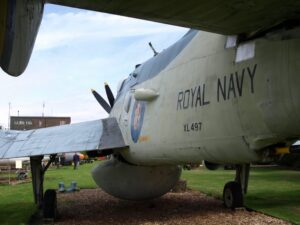
The Dumfries Aviation museum is an independent museum run entirely by volunteers. It was founded on the site of a World War II air crash by enthusiasts and is based around the control tower of the former RAF Dumfries. The museum contains a fascinating array of aircraft memorabilia and pieces recovered from archaeological digs at various crash sites. Make sure to check out the Supermarine Spitfire Mk II which was recovered from the waters of Loch Doon.
Devorgilla Bridge

Devorgilla Bridge stands proud above the Nith and has connected the two banks of Dumfries together for centuries. In fact, it is one of Scotland’s oldest bridges which was built sometime in the early 15th century with additions and changes over the following centuries. The name refers to Devorgilla Balliol who was said to have built a wooden bridge to cross the Nith during the 1260s. Today it is pedestrianised and a great place to take in the beautiful views of the Nith and the town of Dumfries.
Robert Burns House
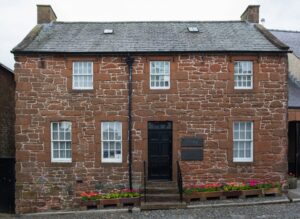
Dumfries is Burns town and for good reason. Burns spent the last years of his life in the town within a simple sandstone house that is now known as Robert Burns House. It has also attracted other famous visitors over the years including the poets Wordsworth, Coleridge and Keats. There, you can see some of the Bard’s original manuscripts and personal belongings to get glimpses into his inner life.
Buccleuch Street Bridge
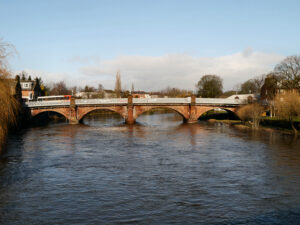
A key part of Dumfries’ architectural fabric is the Buccleuch Street Bridge. First built by Thomas Boyd in 1792-1794, its five segmental arches still sit above the river Nith, making sure that people can go about their day on either side of the river. As time went on it needed to accommodate more people and then eventually cars and other road traffic. It was widened in 1893, reinforced in 1935 and then widened again in 1984-1985 to improve the roadway. Many people pass over this bridge every day but it’s well worth stopping for a moment to enjoy the sculpture and ornamentation still present and to think about the past generations who crossed the very same spot.
Lincluden Collegiate Church
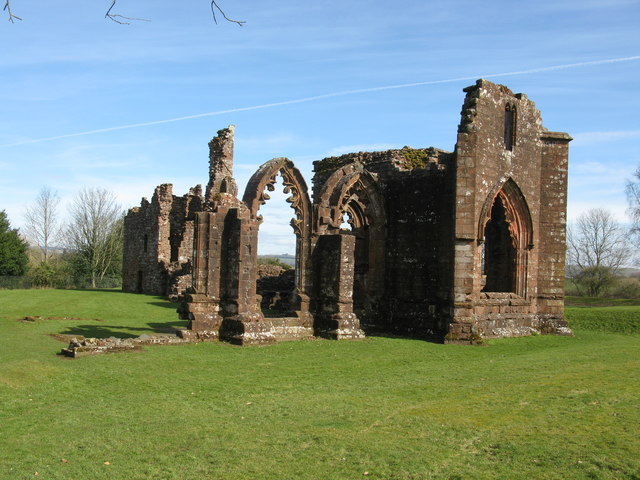
A lesser known gem in Dumfries is Lincluden Collegiate Church which was built in about 1400 to replace a nunnery which seems to have fallen into decay. It was mostly likely constructed by one of the finest master masons of his time in Scotland, John Morrow. Although the church is in ruins, the choir represents some of the best Gothic architecture in Scotland and you can still find the monumental tomb of Princess Margaret, who died in 1450.
Lincluden Collegiate Church is signposted to the east of the A76 a little north of its junction with the A75 Dumfries bypass. It lies in a bend of the Cluden Water near its confluence with the River Nith, and on the eastern edge of the housing estate that today forms most of Lincluden itself.
Robert Burns Statue

Located in the centre of Dumfries, the statue of Robert Burns was erected in May 1877 to honour one of Dumfries’ most famous inhabitants. The statue was designed by artist Amelia Paton Hill who was well known for exhibiting portraits and sculptures at the Royal Academy. The statue itself was carved in Carrara by Italian craftsmen working to Amelia Hill’s model.
Queensberry Monument
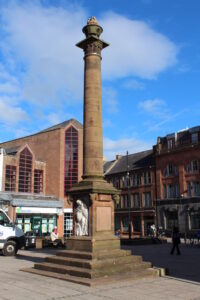
Sitting in the centre of Queensberry Square is the 21-foot-tall Queensberry Monument. It was designed by the famous architect Robert Adam and originally erected in 1780 as a memorial to Charles Douglas 3rd Duke of Queensberry. It did take a brief break away from the square, however, when in 1934 it was moved to English Street due to concerns about rising traffic. In 1989 the town centre was pedestrianised and in 1990 the Queensberry monument was returned to its rightful location. Make sure to give the four ram heads a smile next time you pass by!
Old Bridge House Museum
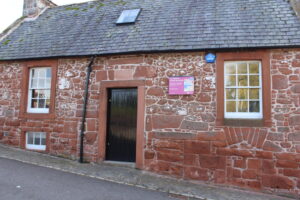
The Old Bridge House Museum, which now houses a museum of daily life, is well worth a visit. Not only does it have the distinction of being Dumfries’ oldest house (1660) but it is actually built into the sandstone of Devorgilla bridge itself. During the 18th century it served as an inn and of course it was no surprise that it was supposedly visited by Robert Burns. Inside this charming time capsule to the past you can also see the old Victorian family kitchen, nursery and bedroom and even an early dentist’s surgery.
Robert Burns Centre
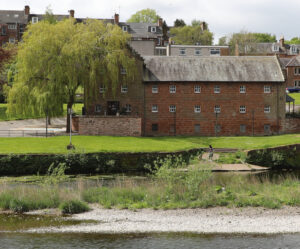
Situated in an 18th-century watermill on the west bank of the River Nith in Dumfries, is the Robert Burns Centre. It is a beautiful and fitting location to tell the story of Robert Burns’ last years spent living in 18th century Dumfries. The exhibition contains many of Burns’ manuscripts and other personal belongings, audio-visual presentations of his life as well as a scale model of the bustling Dumfries of the late 18th century.
Hidden Histories
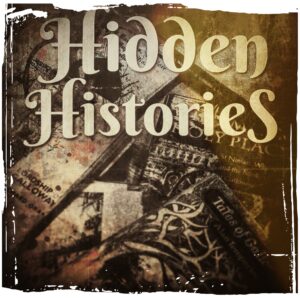
Hidden Histories projects seek to encourage people to increase their knowledge and love of our local landscape and unlock their local community heritage and folklore by researching the origins of local legends to enrich their lives and allow them to learn lessons from the past that can be used as solutions for the future. Tied to this is to achieve increased aspirations, hope, teambuilding, motivational self-awareness, a sense of pride, sense of belonging, increased self-esteem, self-confidence, decreased feelings of isolation, community reconnection, reconnection with the self and improved research skills. They run workshops across the region where people come together to explore, learn and connect.
Wordsmithscrafts
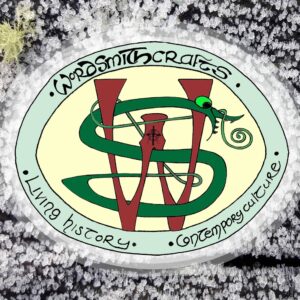
Wordsmithcrafts, founded by Simon Lidwell, seeks to encourage making things, community development and spiritual and historical exploration. Simon uses ancient techniques and modern materials to create objects from the past in order to understand better and possibly experience what life for our ancestors was like.
Lately, Wordsmithcrafts has also been creating resources to enjoy and educate during the Pandemic such as stories and live performances that explore the past on the Floating Monastery YouTube Channel, written stories, labyrinth meditations and craft activities like Viking rune writing and how to make a Viking board game.
Galloway Longfhada Vikings
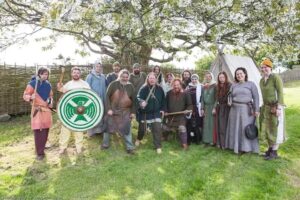
No town would be complete without its local historical re-enactment group. For Dumfries, this comes in the form of the Galloway Longfhada Vikings. Their aim is to educate and entertain the public about the early medieval period, in particular the everyday life and dramatic events of the 10th Century. It’s not just Vikings however, but also Gaels, Britons and Picts as they seek to represent the reality of the time. They also have a high proportion of artists and crafters – as well as warriors!
Glencaple to Carelaverock
Caerlaverock Castle

Caerlaverock Castle, one of Scotland’s most unique and impressive castles, lies just south of Dumfries and just north of the Solway’s shore. Caerlaverock, which comes from Brittonic and most likely means ‘fort of the skylark’, was built in the 1270s and with its wide moat, formidable battlements and towering gatehouse is an excellent example of Medieval architecture. One of its most striking features is its triangular design which gives it a truly unusual feel and likely aided its defense during the turbulent cross-border warfare of the Middle Ages. It has an almost fairy-tale appearance which has made it a popular filming site and features in several movies such as The Decoy Bride.
The castle remains in very good condition and you can still explore its different rooms and passages as well as its unique engraved heraldry and scenes from myth and history. The visitor centre hosts displays about the castle’s history and the grounds themselves (where you can find reconstructed medieval siege engines) are well worth a wander.
Even if you can’t make it in person, you can still explore the castle in incredible detail through this 3D reconstruction!
Further Reading:
Historic Environment Scotland | Visit Scotland | Exploring Castles
Ruthwell Cross
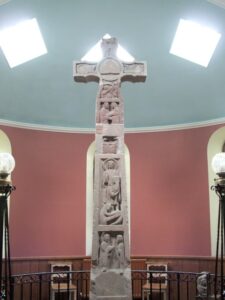
Ruthwell Cross is one of the most impressive monuments to survive from the Anglo-Saxon period. It stands at over five metres tall and mixes insular style art (a style that originated in Ireland and Britain) with inscriptions in Latin and Old English through the runic alphabet, as well as scenes from Christian tradition, which illustrates the cultural exchanges that were taking place across Britain after the departure of the Romans. It dates back to the late 7th century and is located in the village of Ruthwell. Local folklore claims that it was probably intended for a site further down the coast – perhaps the cultural centre of Whithorn – but the ship carrying it ran aground and so the column was brought ashore. It is thought that the cross was added to the column at a later point and in the 17th century the cross and column were moved to Ruthwell Church where it can still be found today.
Further Reading:
Ward Law Hillfort
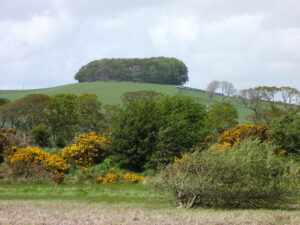
It is still not known when Ward Law Hillfort was built but archaeologists have suggested sometime between 800BC and 500CE. The name means ‘Sentry Hill’ and it is easy to see why the name and location were chosen as it has commanding views in all directions. It is 96 metres (300 feet) above sea level and has two or more defensive circuits of banks and ditches at the summit.
The Romans also recognised the strategic importance of the site as they too built a fort on Ward Law hill. The Roman fort consisted of a stone and wood rampart and an 18-foot-wide trench. The footprints of the fort can still be seen, especially from an aerial view.
Further Reading:
Merlin Trail

South West Scotland played an important role in Scotland’s early Dark Age History. Kingdoms rose and fell, wars and battles took place, migrations meant mixing and exchange and much of this was linked in with the wider history, mythology and legend of the island as a whole. The Merlin Trail explores this much neglected period and links together the history, archaeology, topography, botany and folk memory of Dumfries and Galloway with the figure of Merlin from Brittonic and Arthurian legend.
This trail has an excellent website which provides the history of key sites in the region and how they were linked into a network that stretched across Britain.
Further Reading:
Priestside Anchor
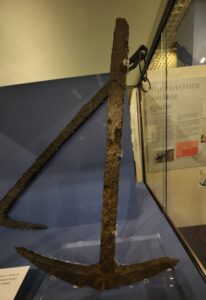
This large iron anchor is a highly unusual find and is rare evidence of ancient seafaring activity in Dumfries and Galloway. It was found during deep drain digging in the 1880s and is now on display in Dumfries Museum but has been part of exhibitions in different locations across the region.
Although there is debate as to its origin, it is thought to be dated to the period of Roman occupation of Britain. This was a time when sea travel was economic and inland waterways such as the River Nith were central to the transport of goods from inland on to the rest of the empire. Roman forts such as Wardlaw and Lantonside were likely supply bases for items such as wine, oil and garum (a particularly pungent fish sauce).
Further Reading:
Glencaple Port
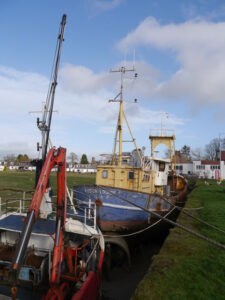
In 1746, the Earl of Nithsdale offered land for a new port to be built. Glencaple soon became a bustling harbour which serviced ships that voyaged between Scotland, the West Indies and America. In the early 1800s improvements were made and a new age of ship building began. At the same time, Scotland saw much migration to the colonies, especially Canada, and Glencaple was a primary departure point for many Scots. Glencaple saw two new vessels launched annually during the 1800s and all the ships that were built between 1806 and 1858 are listed on one of the three the oak benches that were created in order to honour Glencaple’s rich maritime heritage. You can find these benches when exploring Glencaple Port.
Further Reading:
Lantonside
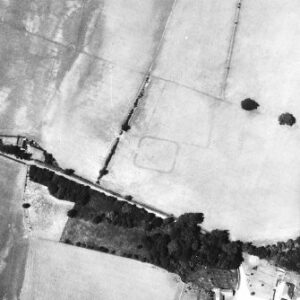
The Selgovae were the people inhabiting the area around the mouth of the Nith during the Roman occupation of southern Scotland. Their lands were heavily planted with Roman forts and Lantonside was built in order to control river traffic travelling up and down the Nith. Today it is located close to the shore near Solway Cottage, however, little remains of the original fort aside from its faint imprint in the land.
Further Reading:
Caerlaverock Kirk

The current building is “B” listed and dates to 1781. It was designed by architect James Barbour of Dumfries and still houses some 17th-19th century stone monuments including that of Robert Paterson, prototype of Sir Walter Scott’s “Old Mortality”. The churchyard is open to the public and there you can find seven war graves.
Further Reading:
Old Caerlaverock Castle

A stone’s throw away from its much more famous neighbour, Old Caerlaverock Castle is situated in a woodland behind Caerlaverock Castle. While much of its original structure and fortification no longer survive, you can still see its original square foundations and moat. Old Caerlaverock was built in around 1220 and was one of the first stone castles built in Scotland. It was completed by Sir John DeMaccuswell (Maxwell) after he was granted land by King Alexander II. It did not remain the family’s residence for long however, not because of war or intrigue, but because only 50 years later Caerlaverock Castle was built nearby in 1270. The original castle was soon abandoned and excavations in the 90s managed to unearth what we can still see today.
Further Reading:
Brow Well
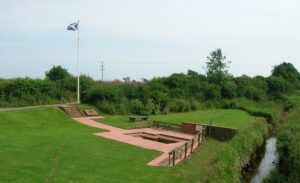
Brow Well is a chalybeate spring (a spring containing mineral and iron salts) which was renowned for the healing properties of its waters. Mineral wells like this were popular in the 18th and 19th centuries and part of the reason why Brow Well still survives is its connection with Robert Burns. The well became popular with locals in the 1700s and Robert Burns visited the well to seek a cure for his rheumatic fever in 1796. It has remained a place popular for Burn’s fans ever since and remains in great condition to this day.
Further Reading:
Islesteps, New Abbey, and Carsethorn
Sweetheart Abbey

Located in the centre of New Abbey village is the impressive Sweetheart Abbey. Sweetheart Abbey was built by Cistercian monks after a charter was signed by Lady Devorgilla (who is also associated with the construction of Devorgilla bridge in Dumfries) in 1273. The abbey was built in honour of her husband who had died in 1268. Lady Devorgilla was known to have kept her husband’s embalmed heart in an ivory box and when she died, both she and the heart were laid to rest within Sweetheart Abbey. This is where the name of the abbey supposedly comes from- Dulce Cor (sweet heart in Latin). The abbey played an important role in Scottish History throughout the following centuries until the reformation and the dissolution of the monasteries. It remains a stunning example of medieval architecture and exploring what remains between its red stone walls is a great day out.
Further Reading:
Historic Environment | Visit Scotland | Undiscovered Scotland
Carsethorn and Nith Estuary Conservation Area
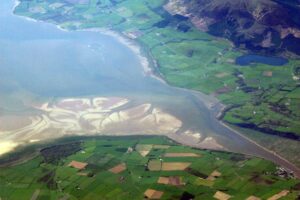
Carsethorn is part of the Nith Estuary National Scenic Area which places it among the most beautiful regions of the country. A heritage project grew up around all this which began with the recording of families who had emigrated from Carsethorn during the lowland clearances. An oak log, shaped like the hull of a ship, was placed near the foreshore with the family names and numbers marked with copper nails and an information board was erected for public information. There are also now interpretation boards, an information point and bird hides in the village and all this helps visitors and locals learn more about the history of Carsethorn and the local area.
Further Reading:
John Paul Jones Museum

The John Paul Jones Cottage Museum located between Carsethorn, Kirkbean and Southerness is renowned as the birth place of John Paul Jones, ‘The Father’ of the U.S. Navy. The cottage sits on the Arbigland Estate where John Paul Jones grew up and has been restored to how it would have been when he lived there and features unique artifacts and information from his past.
The Visitor Centre has an extensive interpretation of his life and the tour starts with a video of his life. Children can play with the fabulous display of Playmobil Pirate ships and treasure islands or enjoy the whole site as they take part in the Free Treasure Hunt.
Further Reading:
New Abbey Corn Mill
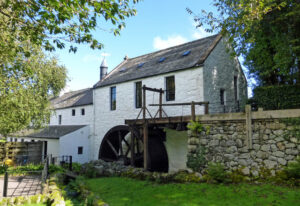
The survival of this 18th century watermill is remarkable considering how many buildings of this type have been forgotten about over the past two centuries. Not only is it a time capsule of the life of a miller and an integral piece of industrial history, but it is often still put into action in the summer months. You can still experience the sights, smells and sounds because the machinery, such as the water-sluice, spoked mill wheel and gear wheels, are well preserved. History is not just about castles and battles, but the everyday life and activities of normal people.
Further Reading:
Saint Queran’s Well, Islesteps

There is a remarkable wee secret near Islesteps – St Queran’s Well. The well is dedicated to the 9th century Saint and in the past, it drew people from huge distances to drink its ‘healing’ water. Hundreds of coins, some dating as far back as the 16th century (from Scotland, England, Ireland and France), were found when it was cleaned in the 19th century. Today, people still leave small offerings when they visit.
Further Reading:
Waterloo Monument
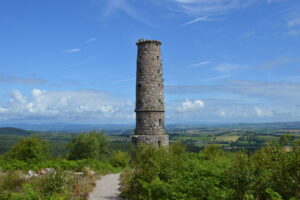
Sitting proud in the hills above New Abbey is the Waterloo Monument. This column monument was built in 1816 to commemorate the Battle of Waterloo the year before. As it is only a short walk away from new Abbey, it can be combined with a good hike up Criffel hill. Look out for the inscription which praises the British soldiers and their allies in the victory over Napoleon.
Further Reading:
Crannóg at Loch Kindar
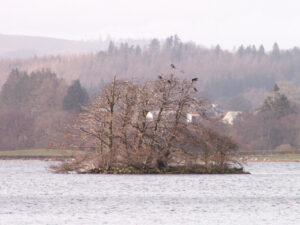
The Crannóg existed for millennia as both a home and a source of protection for our ancestors. Crannógs are small artificial islands that were built in lakes and rivers and on top, people placed their houses and livestock. A good example of a crannog can still be found at Loch Kindar, which stands around 7 feet above the water’s surface and is built on submerged oak logs. These logs were apparently still visible in 1792 on clear, calm days. The island is around 16m in diameter and divers from the Dumfries Museum have confirmed that the wooden frame below is indeed man-made and therefore that it is undoubtedly a crannóg!
Further Reading:
Wreath’s Tower
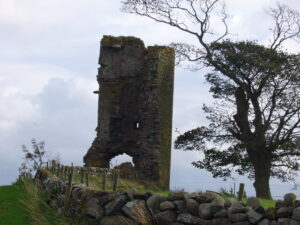
Wreath’s Tower can be found just outside the village of Mainsriddle, about a mile from Southerness. It is not known who built Wreath’s Tower or even when it was built. However, James, Earl of Morton has been associated with the tower and it is thought that it was constructed in the 1500s. Although it only partially survives, it does suggest that the original structure was quite impressive. It passed through the ownership of several families over the centuries and its name comes from its 1667 owner John Corbet of Wreaths.
Further Reading:
Hangman Hill
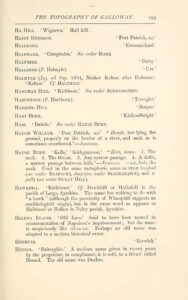
Hangman Hill can be found near the village of Kirkbean. There used to be a large, circular, conical cairn on the top of the hill which was removed in the 19th century. The name of the hill partially comes from the fact that under this cairn, an earthen urn with ashes and bone fragments was found in 1844.
Further Reading:







